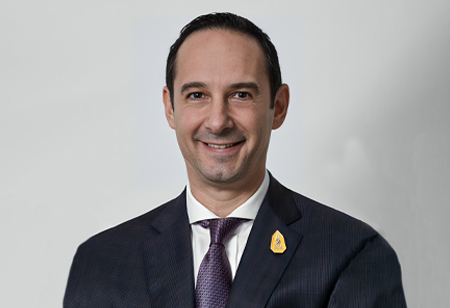
Sustainability - The Key USP for Brands to Stay Ahead of Competitors


Marc Spiegel, Vice President, Robertshaw, 0
Of late, customers are becoming increasingly cautious about the environment and prefer using eco-friendly products that are manufacturing using only sustainable practices. Sustainable product development is all about creating innovative solutions that meet customer needs while minimizing environmental impact. Thus, organizations are now using sustainability as a differential factor by employing ecofriendly practices and positioning themselves as a responsible, forward-thinking company. This has enabled them to not only to stay ahead of their competitors in the market, but also attract eco-conscious customers. Additionally, by adhering to various regulatory norms pertaining to sustainability, businesses can steer clear of any non-compliance issues in the future. Furthermore, sustainability initiatives often lead to long-term cost savings through reduced energy consumption, material waste, and overall operational efficiency. Focusing their R&D efforts on these areas enables brands to deliver solutions that benefit both the environment and their customers' bottom line. As a result, brands now view sustainability as a smart way to do business rather than just the right thing to do.
Integrating VoC into Product Development
We prioritize Voice of the Customer (VoC) throughout the product development process, and environmental sustainability is a key area where we leverage customer insights. Firstly, our sales team works closely with R&D and Engineering to gather technical requirements, drawings and samples directly from customers, enabling us to have a better understanding of their specific needs and environmental goals. We then hold joint design sessions with our customers’ R&D and Engineering teams to develop innovative, sustainable solutions that meet their exact needs. Additionally, participating in numerous industry trade shows will help companies to stay abreast of the latest market dynamics, understand the current & future market demands, and establish benchmarks in the industry against their competitors.
Further, brands can also gather feedback from their customers to gather insights into their environmental
priorities and market demands. For instance, our sales team maintains a constant communication with our customers across the Asia-Pacific region to understand the unique sustainability needs of each country. This allows us to develop solutions that are regionally relevant and impactful.
KPIs to Measure the Environmental Impact of the Products
While there are numerous KPIs and metrics that organizations can use to assess the environmental impact of their products, they can all be classified into two categories – resource consumption and emissions reduction. Under resource consumption, companies can constantly monitor the amount of energy and quantity of water that their products use when they are operational. Additionally, they can also analyze the amount of raw materials that are needed to produce one unit of their product and accordingly redesign their production process to consume less material and minimize wastage. Similarly, in terms of emission reduction, businesses can ascertain their carbon footprint by measuring the amount of greenhouse gases that are being produced through their manufacturing plants and taking necessary measures to keep them at bare minimum levels. Also, measuring and reducing methane leakage rates in the production process contributes significantly in the companies’ emission reduction efforts.
Future Trends in Sustainability
From a sales perspective, the future of environmentally sustainable product development is incredibly bright. An increasing number of consumers are now prioritizing sustainability and are willing to pay a premium for products that minimize environmental impact. This trend is only going to accelerate going forward majorly due to factors such as climate change awareness and stricter regulations. Governments are also implementing stricter environmental regulations around production, materials, and end-of-life practices, thus pushing brands to develop more sustainable products. Additionally, the manufacturing industry is embracing collaboration and innovation. Eco-design principles, recyclable materials, and energy efficiency are rapidly becoming the norm. To summarize, developing sustainable products is an investment for the future, as it creates a positive brand image, attracts top talent who value sustainability, and future-proofs the company for a changing market.
KPIs to Measure the Environmental Impact of the Products
While there are numerous KPIs and metrics that organizations can use to assess the environmental impact of their products, they can all be classified into two categories – resource consumption and emissions reduction. Under resource consumption, companies can constantly monitor the amount of energy and quantity of water that their products use when they are operational. Additionally, they can also analyze the amount of raw materials that are needed to produce one unit of their product and accordingly redesign their production process to consume less material and minimize wastage. Similarly, in terms of emission reduction, businesses can ascertain their carbon footprint by measuring the amount of greenhouse gases that are being produced through their manufacturing plants and taking necessary measures to keep them at bare minimum levels. Also, measuring and reducing methane leakage rates in the production process contributes significantly in the companies’ emission reduction efforts.
Participating in industry trade shows will help companies to stay abreast of the latest market dynamics, understand current & future market demands, and establish benchmarks in the industry against their competitors.
Future Trends in Sustainability
From a sales perspective, the future of environmentally sustainable product development is incredibly bright. An increasing number of consumers are now prioritizing sustainability and are willing to pay a premium for products that minimize environmental impact. This trend is only going to accelerate going forward majorly due to factors such as climate change awareness and stricter regulations. Governments are also implementing stricter environmental regulations around production, materials, and end-of-life practices, thus pushing brands to develop more sustainable products. Additionally, the manufacturing industry is embracing collaboration and innovation. Eco-design principles, recyclable materials, and energy efficiency are rapidly becoming the norm. To summarize, developing sustainable products is an investment for the future, as it creates a positive brand image, attracts top talent who value sustainability, and future-proofs the company for a changing market.

